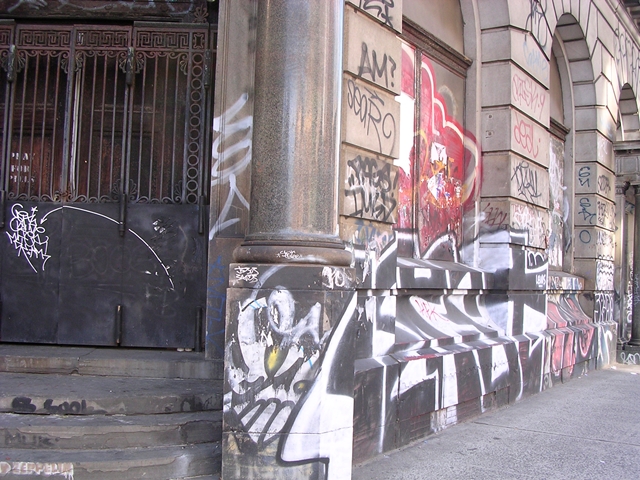
Picture this – it’s a sunny September morning in Kent. You’re a tenant and operate an amusement arcade. Whilst unlocking your shutters you notice that a vandal has decided to spray graffiti on one of your walls. A disappointing find? Well not if that graffiti has been produced by one of the most famous street artists in the world. You initial thoughts are – what a windfall! Well, don’t get too excited.
The Court has confirmed that a mural painted on the outside wall of a building in Folkestone is the property of the landlord, even when it had been removed by its tenant and shipped to New York for sale.
In September 2014, a mural, attributed to the street artist Banksy, was spray-painted onto the wall of a property leased to a tenant for a term of 20 years. Between 31 October and 3 November 2014 the tenant, thinking it could benefit from a significant windfall, removed the section of the wall with the mural and made good the damage. On advice received from an art dealer, the tenant shipped it to New York to be sold.
The tenant claimed it was acting in accordance with its repairing obligations under the lease by removing the mural. Once removed, the tenant claimed that the mural became its property by virtue of an implied term in the lease – a slightly tenuous point.
The landlord assigned its claim and interest in the mural to a charitable art foundation (“the Foundation”). The Foundation issued a claim and then applied for summary judgment (an early determination of the claim). The Foundation argued that, in accordance with established principles of land law, the building was attached to and formed part of the property belonging to the landlord. The Foundation was successful with its claim.
Once sprayed onto the wall, the Court concluded that the mural became part of the land. The tenant had no right to remove the section of the wall by virtue of its repairing covenants or otherwise and the removal was in breach of the prohibition on alterations.
The Court also confirmed that once removed from the wall, the mural had become a chattel and that chattel belonged to the landlord who had assigned ownership to the Foundation.
The Foundation asked the Court to exercise its power to order the delivery of the mural to the Foundation. The Court obliged and the mural was returned to Folkestone in October 2015.
The Court’s decision in this case (The Creative Foundation v Dreamland Leisure Ltd and others [2015] EWHC 2556 (Ch) is consistent with the well established principle that the whole of a leased property belongs to the landlord.
If you require advice or assistance on a property dispute, please do not hesitate to contact Ben Jones, a property litigation partner in our Truro Office on 01872 265100.
